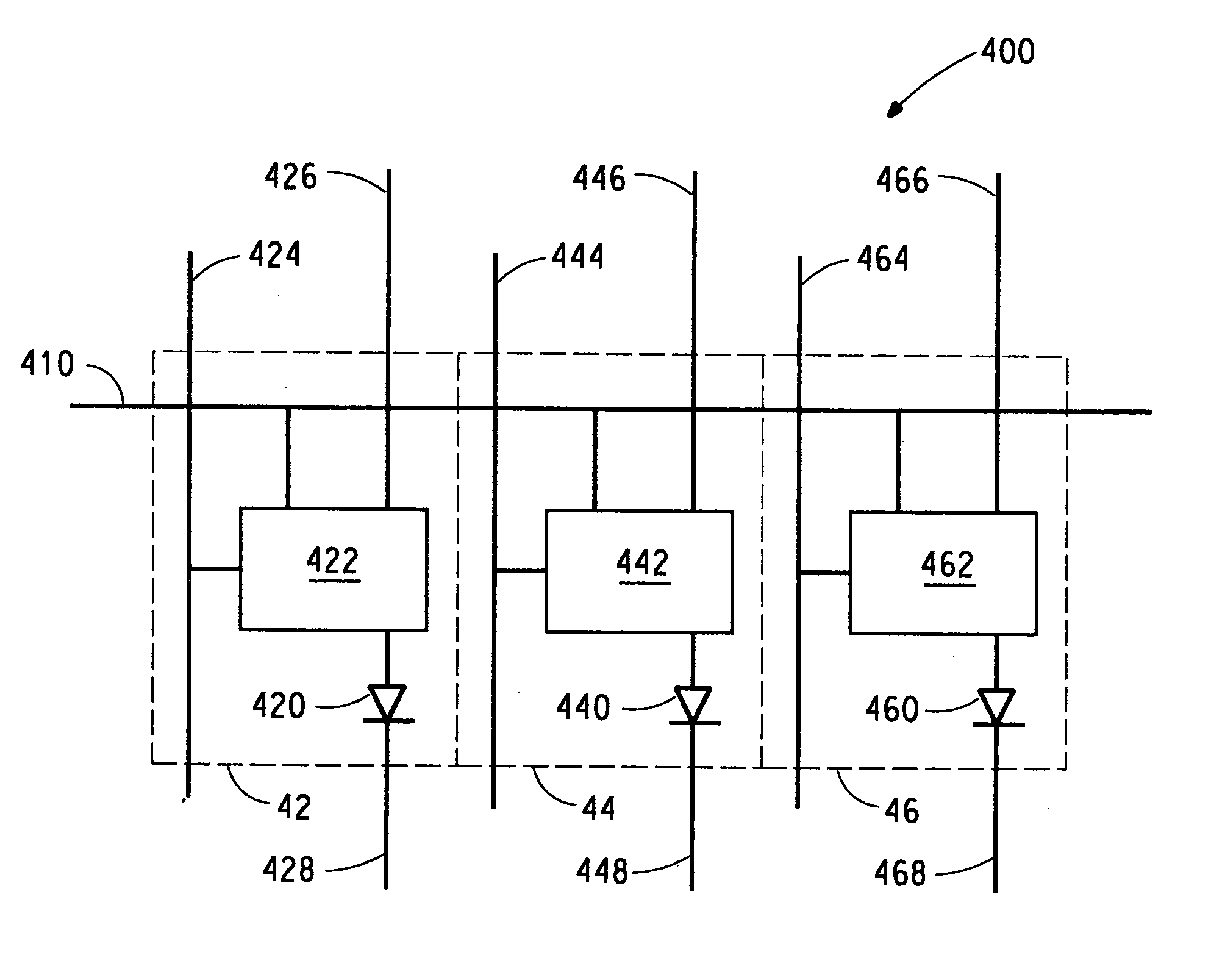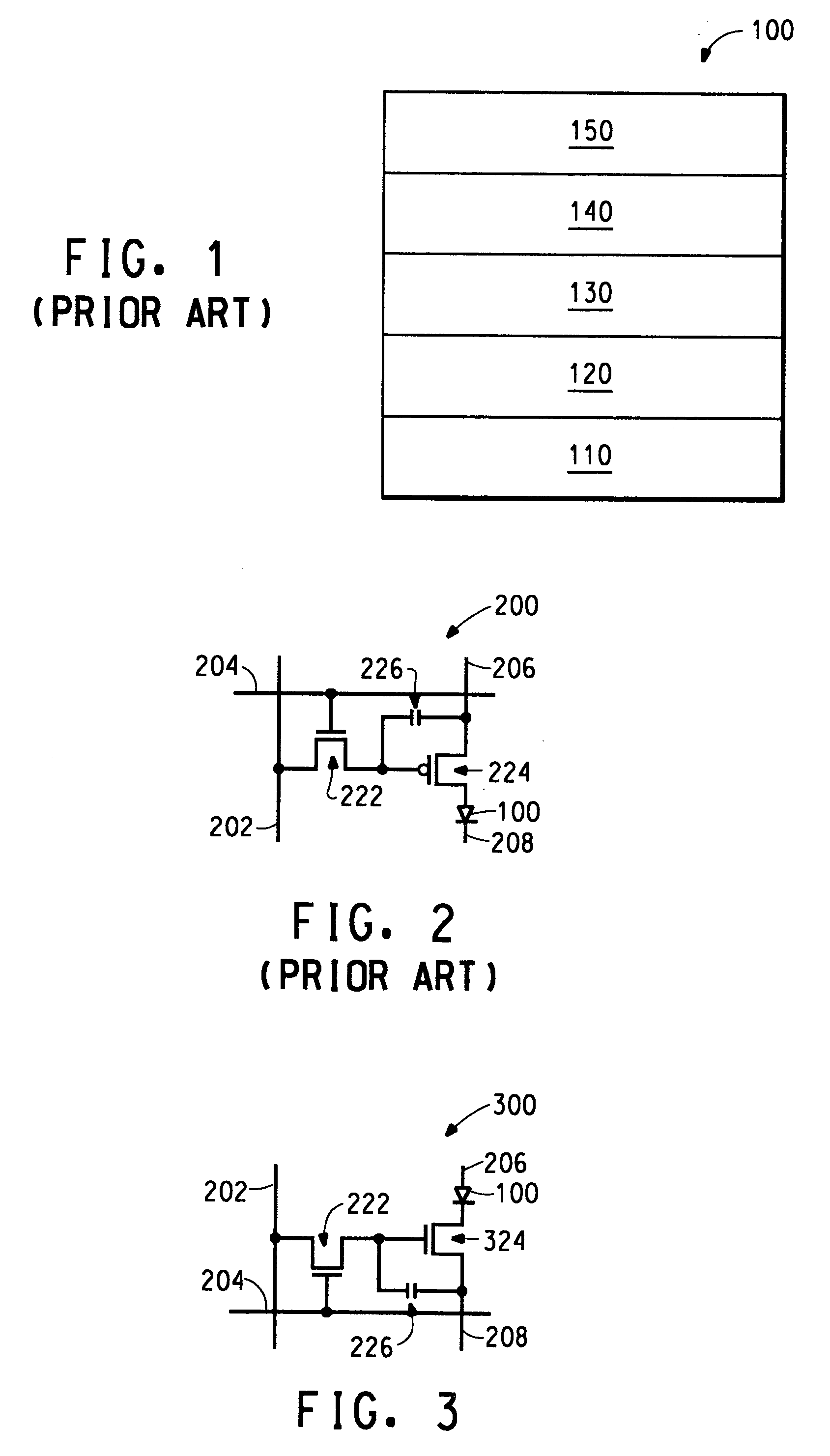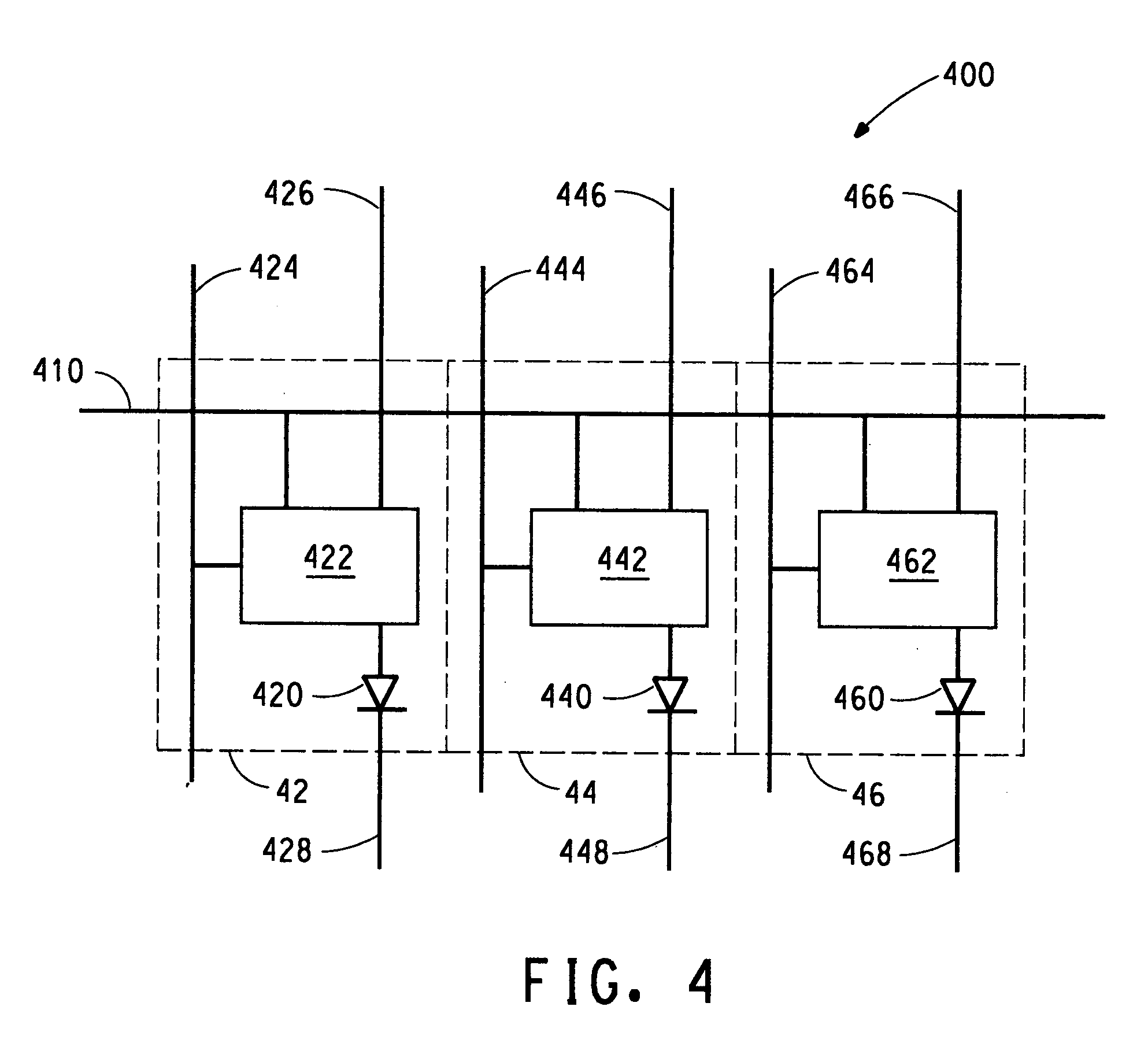Organic electronic device having improved homogeneity
a technology of electronic devices and homogeneity, applied in the direction of static indicating devices, identification means, instruments, etc., can solve the problems of reducing display quality considerably, electrical connections may also increase the complexity or cost of design, and no compensation is provided for intensity decrease related problems
- Summary
- Abstract
- Description
- Claims
- Application Information
AI Technical Summary
Benefits of technology
Problems solved by technology
Method used
Image
Examples
example 1
[0096] Example 1 shows that the configuration as illustrated in FIG. 5 can be used to measure radiation intensity for a 10.times.10 passive-matrix OLED display. The photodiode 52 can be placed near pixels 504. In this example, each display pixel can be turned on sequentially. Light from a pixel 504 at coordinates x and y can be received by the photodiode 52 and converted to an electrical signal. The value of the signal from the photodiode may have a corresponding potential, V.sub.0(x,y). An advantage of this method is that the signal from the photodiode can be independent of each pixel's position. Because the photodiode 52 may contact the user side 500 of the electronic device 50, acceptable signal level can be obtained without any significant complication. The signal generated by the photodiode 52 may only depend on the actual light intensity of each pixel under certain operating voltages.
[0097] Table 1 includes exemplary data from different pixels (Pixel 1, 5, and 9) under differe...
example 2
[0098] Example 2 shows that the configuration as illustrated in FIG. 6 can be used to measure radiation intensity for a 10.times.10 passive-matrix OLED display. The apparatus 60 can be placed on the user side 500 of the display of the electronic device 50. The system can be operated in a manner similar to Example 1. An advantage of this method is that no large photodiode is required, and the read-out process may be significantly quicker than the method in Example 1. The optical waveguide may be similar to that used for backlight in liquid crystal displays in laptop computers. Such an optical waveguide is known to skilled optical engineers. The measured signal can be a function of pixel location. The further the pixel is from the photodetector, the smaller the measured signal is.
[0099] Table 2 includes exemplary data from different pixels (Pixel 1, 5, and 9) under different driving current conditions (i.sub.LED). In Table 2, output current from the photodiode 62 is shown for each pix...
example 3
[0100] Example 3 shows that the configuration as illustrated in FIG. 7 can be used to measure radiation intensity for a 10.times.10 passive-matrix OLED display. A small portion of the light output from each pixel's emission can be transmitted to the sensor 72 through the waveguide portion 74 of the substrate 705. In this method, each pixel can be turned on sequentially. The advantage of this method is that the photodiode can be integrated onto the same substrate as the display, which can simplifies the module system. This approach should have sufficient optical waveguiding and low self-absorption of the light by the light-emitting material.
[0101] Table 3 includes exemplary data from different pixels (Pixel 1, 5, and 9) under different driving current conditions (i.sub.LED). In Table 3, the output current from the photosensor 72 is shown for each pixel listed.
3TABLE 3 i.sub.LED (.mu.A) Pixel 1 i.sub.PD (nA) Pixel 5 i.sub.PD (nA) Pixel 9 i.sub.PD (nA) 10 -1.5 -0.5 -0.5 20 -3.5 -1.4 -1...
PUM
 Login to View More
Login to View More Abstract
Description
Claims
Application Information
 Login to View More
Login to View More - R&D
- Intellectual Property
- Life Sciences
- Materials
- Tech Scout
- Unparalleled Data Quality
- Higher Quality Content
- 60% Fewer Hallucinations
Browse by: Latest US Patents, China's latest patents, Technical Efficacy Thesaurus, Application Domain, Technology Topic, Popular Technical Reports.
© 2025 PatSnap. All rights reserved.Legal|Privacy policy|Modern Slavery Act Transparency Statement|Sitemap|About US| Contact US: help@patsnap.com



